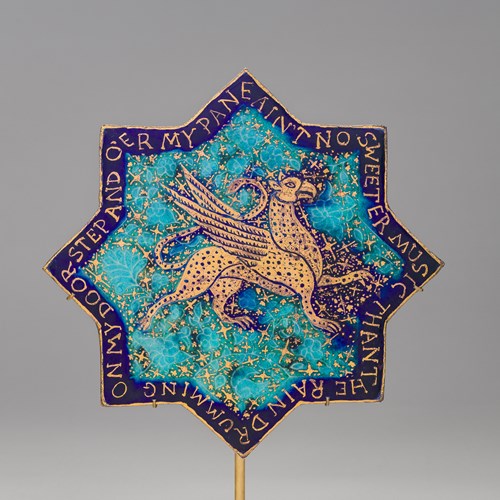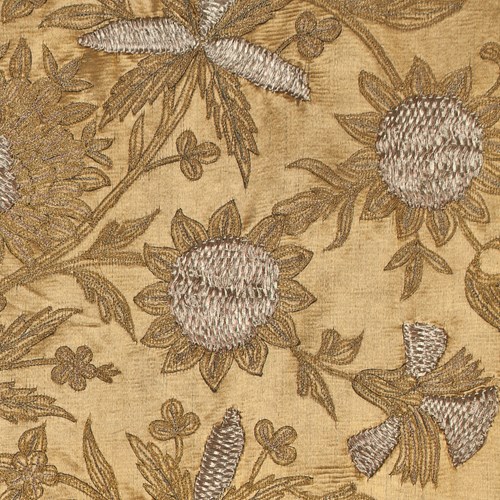Marketplace
Safavid Qalyan (Water-pipe)
Safavid Qalyan (Water-pipe)
Date 16th / 17th century
Period 1400-1600, 1600-1750, 16th Century, 17th century
Origin Iran
Medium Ceramic
Dimension 21 x 17 cm (8¹/₄ x 6³/₄ inches)
This ceramic qalyan ("water-pipe"), in the shape of a seated elephant, is decorated with floral motifs divided into separate panels of vertical and horizontal bars executed in underglaze cobalt blue with black-line technique. The spout and neck of the vessel was mended at a later date with engraved and inlaid brass; in particular, the s-shaped brass spout skilfully revived the elephant’s ceramic tusk.
Safavid potters meticulously copied water-pipes from the Jingdezhen region of China, which had been exported to the Middle East since the early years of the Ming Dynasty (1368-1644). Commonly known by the Malay name of kendi, the Safavids were clearly influenced by the Chinese designs of these vessels, including zoomorphic dispositions (such as elephants and frogs) and the details of decorations.[1]
There is a similar elephant-shaped qalyan, without brass additions, in The Metropolitan Museum of Art, New York (Accession Number 68.180) as well as a mended qalyan with brass in the Victoria and Albert Museum, London (Accession Number 1020-1883).
References
[1] Patty Proctor. “The Measure of Faithfulness: The Chinese Models for Safavid Blue-and-White”. In Persian Pottery in the First Global Age: The Sixteenth and Seventeenth Centuries, edited by Lisa Golombek, Robert B. Mason, Patricia Proctor, and Eileen Reilly, 123-168. Leiden: Brill. p. 143.
Stock no.: A5057
Safavid potters meticulously copied water-pipes from the Jingdezhen region of China, which had been exported to the Middle East since the early years of the Ming Dynasty (1368-1644). Commonly known by the Malay name of kendi, the Safavids were clearly influenced by the Chinese designs of these vessels, including zoomorphic dispositions (such as elephants and frogs) and the details of decorations.[1]
There is a similar elephant-shaped qalyan, without brass additions, in The Metropolitan Museum of Art, New York (Accession Number 68.180) as well as a mended qalyan with brass in the Victoria and Albert Museum, London (Accession Number 1020-1883).
References
[1] Patty Proctor. “The Measure of Faithfulness: The Chinese Models for Safavid Blue-and-White”. In Persian Pottery in the First Global Age: The Sixteenth and Seventeenth Centuries, edited by Lisa Golombek, Robert B. Mason, Patricia Proctor, and Eileen Reilly, 123-168. Leiden: Brill. p. 143.
Stock no.: A5057
Date: 16th / 17th century
Period: 1400-1600, 1600-1750, 16th Century, 17th century
Origin: Iran
Medium: Ceramic
Dimension: 21 x 17 cm (8¹/₄ x 6³/₄ inches)
More artworks from the Gallery


_T638204241155849494.jpg?width=2000&height=2000&mode=max&scale=both&qlt=90)






